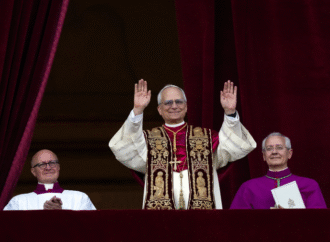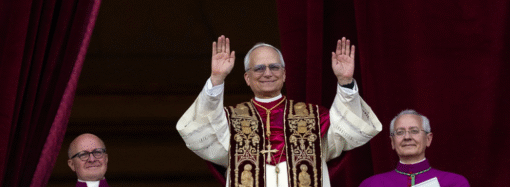Eighty years ago, on May 27, 1935, the U.S. Supreme Court said no to economic fascism in America. The trend toward bigger and ever-more intrusive government, unfortunately, was not stopped, but the case nonetheless was a significant event that at that time prevented the institutionalizing of a Mussolini-type corporativist system in America.
In a unanimous decision the nine members of the Supreme Court said there were constitutional limits beyond which the federal government could not go in claiming the right to regulate the economic affairs of the citizenry. It was a glorious day in American judicial history, and is worth remembering.
When Franklin Roosevelt ran for president in the autumn of 1932 he did so on a Democratic Party platform that many a classical liberal might have gladly supported and even voted for. The platform said that the federal government was far too big, taxed and spent far too much, and intruded in the affairs of the states to too great an extent. It said government spending had to be cut, taxes reduced, and the federal budget balanced. It called for free trade and a solid gold-backed currency.
But as soon as Roosevelt took office in March 1933 he instituted a series of programs and policies that turned all those promises upside down. In the first four years of FDR’s New Deal, taxes were increased, government spending reached heights never seen before in U.S. history, and the federal budget bled red with deficits.The bureaucracy ballooned; public-works projects increasingly dotted the land; and the heavy hand of government was all over industry and agriculture. The United States was taken off the gold standard, with the American people compelled to turn in their gold com and built lion to the government for paper money under the threat of confiscation and imprisonment.
In June 1933 Congress passed the National Industrial Recovery Act (NIRA), after which FDR created the National Recovery Administration (NRA). Modeled on Mussolini’s fascist economic system, it forced virtually all American industry, manufacturing, and retail business into cartels possessing the power to set prices and wages, and to dictate the levels of production. Within a few months over 200 separate pricing and production codes were imposed on the various branches of American business. The symbol of the NRA was a Blue Eagle that had lightning bolts in one claw and an industrial gear in the other. Every business in the country was asked to have a Blue Eagle sign in its window that declared, “We Do Our Part,” meaning it followed the pricing and production codes. Citizen committees were formed to spy on local merchants and report if they dared to sell at lower prices.
Propaganda rallies in support of the NRA were held across the country. During halftime at football games cheerleaders would form the shape of the Blue Eagle. Government-sponsored parades featured Hollywood stars supporting the NRA. At one of these parades the famous singer Al Jolson was filmed being asked what he thought of the NRA; he replied, “NRA? NRA? Why it’s better than my wedding night!” Film shorts produced by Hollywood in support of the NRA were shown in theaters around the country; in one of them child star Shirley Temple danced and sang the praises of big-government regulation of the American economy.
The NRA codes were soon joined by similar controls over farming with the passage of the Agricultural Adjustment Act (AAA). Farmers were given subsidies and government-guaranteed price supports, with Washington determining what crops could be grown and what livestock could be raised. Government ordered some crops to be plowed under and some livestock slaughtered, all in the name of centrally planned farm production and pricing.
Much of the urban youth of America were rounded up and sent off to national forests for regimentation and mock military-style drilling as part of the Civilian Conservation Corps (CCC). The Works Progress Administration (WPA) created make-work projects for thousands of able-bodied men, all at taxpayers’ expense. Since unemployed artists were “workers” too, they were set to work in government buildings across the land. Even today, in some o f the post offices dating from the 1930s, one can see murals depicting happy factory workers and farm hands in a style similar to those produced in Stalin’s Russia and Hitler’s Germany.
This headlong march into economic fascism was brought to a halt by the Supreme Court. The catalyst was a legal case known as the Schechter Poultry Corp. v. United States. Schechter, a slaughterhouse that sold chickens to kosher markets in New York City, was accused of violating the “fair competition” codes under the NRA. The case made its way up to the Supreme Court, with the nine justices laying down their unanimous decision on May 27, 1935.
Three hundred people packed the court that day to hear the decision, with prominent members of Congress and the executive branch in the audience. The justices declared that the federal government had exceeded its authority under the interstate-commerce clause of the Constitution, since the defendant purchased and sold all the chickens it marketed within the boundaries of the State of New York. Therefore, the federal government lacked the power to regulate the company’s production and prices. In addition, the justices stated that the NRA’s power to impose codes constituted arbitrary and discretionary control inconsistent with the limited and enumerated powers delegated by the Constitution.
AAA Rejected
This was soon followed by the Supreme Court’s rejection of the AAA in January 1936, when the justices insisted that the federal government lacked the authority to tax food processors to pay for the farmers’ subsidies and price supports. Furthermore, since farming was generally a local and state activity, the federal government did not have the power to regulate it under the interstate-commerce clause.
Franklin Roosevelt was furious that what he called those “nine old men” should attempt to keep America in the “horse and buggy era” when this great nation needed a more powerful central government to manage economic affairs in the “modern age.” FDR’s response was his famous “court packing” scheme, in which he asked Congress to give him the power to add more justices to the Supreme Court in order to tilt the balance in favor of the “enlightened” and “progressive” policies o f the New Deal. But this blatant power grab by the executive branch ended up being too much even for many of the Democrats in Congress, and Roosevelt failed in this attempt to assert naked presidential authority over another branch o f the federal government.
Shortly after the Supreme Court declared both the NRA and AAA unconstitutional, David Lawrence, founder and long-time editor of U.S. News and World Report, published a book titled Nine Honest Men (1936). He praised the justices for their devotion to the bedrock principles of the Constitution, and their defense of the traditional American ideals of individual liberty, private property, and the rule of law — even in the face of the emotional appeal of government to “do something” during an economic crisis.
Since that landmark decision 80 years ago against the imposition of economic fascism in America, the U.S. government has continued to grow in power over the American citizenry. But it should be remembered that men of courage, integrity, and principle can stand up to Big Brother and resist the headlong march into economic tyranny.
Richard M. Ebeling is BB&T Distinguished Professor of Ethics and Free Enterprise Leadership at The Citadel in Charleston, South Carolina. He was president of the Foundation for Economic Education (FEE) from 2003 to 2008.
This blog post has been reproduced with the permission of the Foundation for Economic Education. The original blog post can be found here. The views expressed by the author and the Foundation for Economic Education are not necessarily endorsed by this organization and are simply provided as food for thought from Intellectual Takeout.???????????????????????????????????
















Leave a Comment
Your email address will not be published. Required fields are marked with *